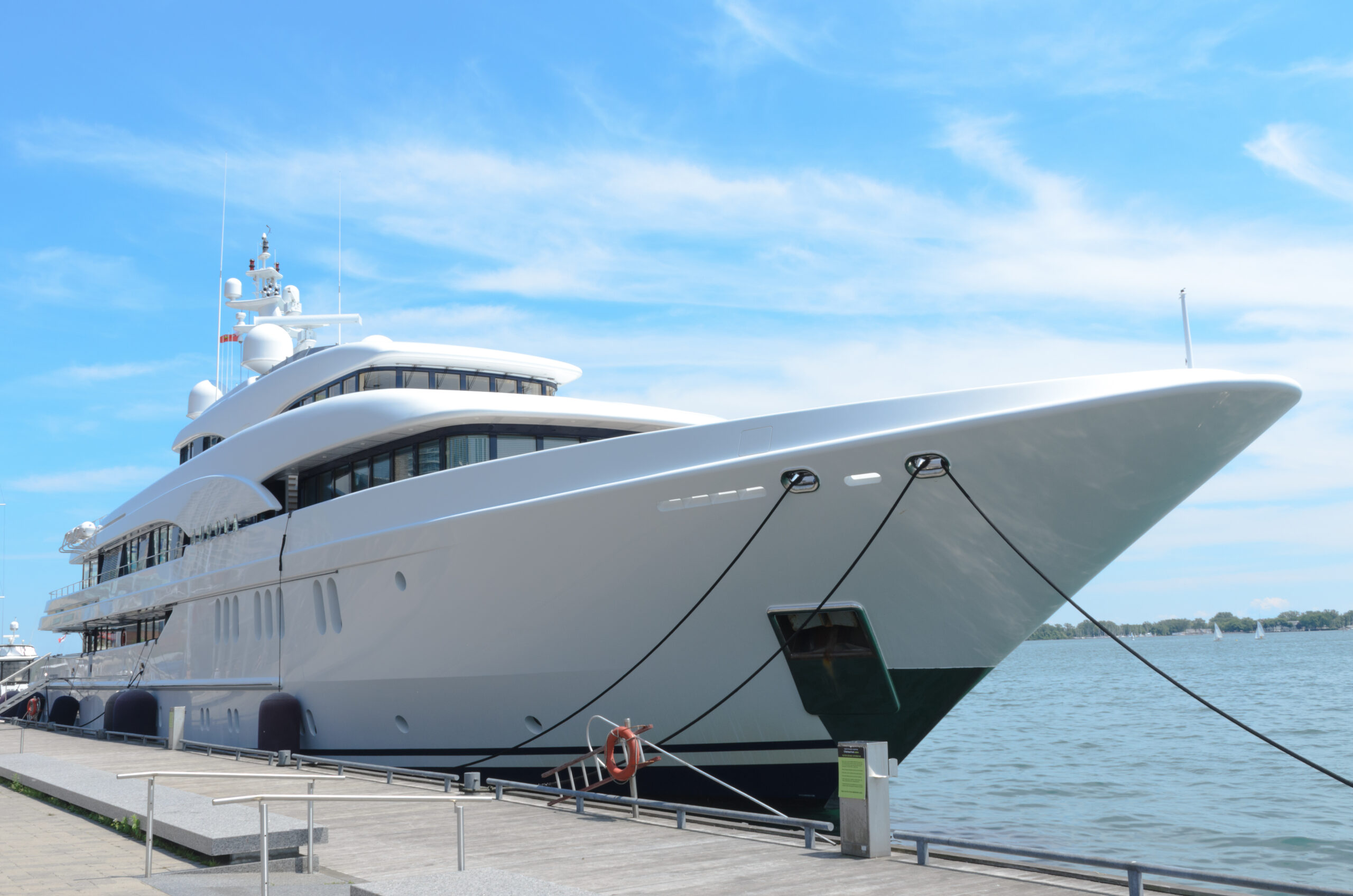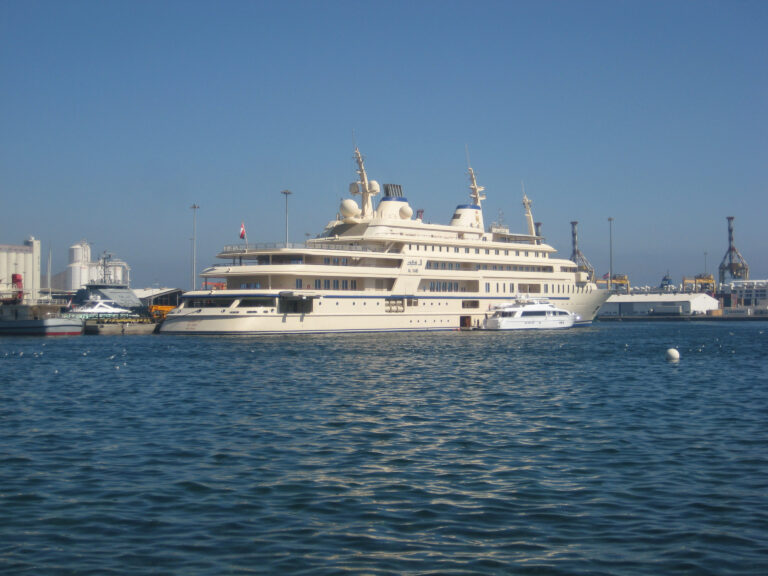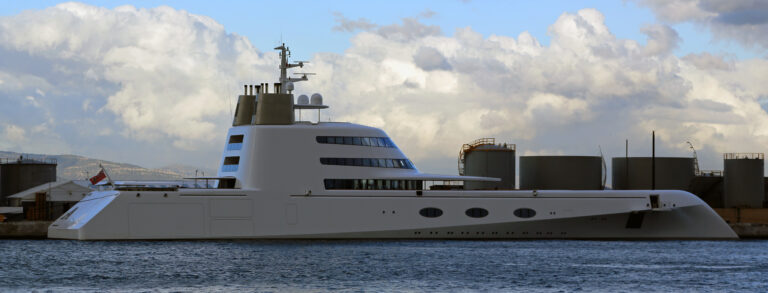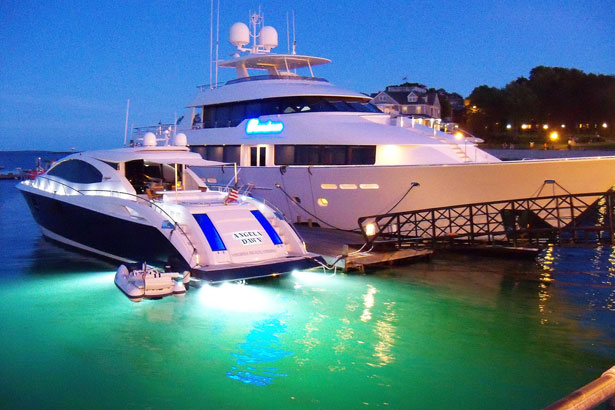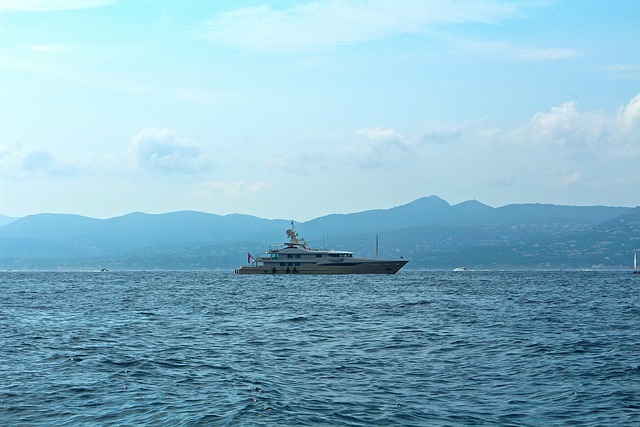Are There Eco-friendly Superyacht Options
Welcome aboard the world of superyachts, where indulgence meets the open ocean. These majestic vessels have always epitomized luxury, flaunting opulent amenities while cruising through azure waters. But as we navigate in a time of increasing environmental consciousness, a pertinent question arises: Are there eco-friendly superyacht options that can let us revel in the lap of luxury while still treading lightly upon our precious planet?
In this article, we delve into the world of superyachts, exploring the existing options that strive to harmonize magnificence with sustainability. While larger-than-life yachts may be notorious for their carbon footprints, there is an emerging tide of innovation sweeping through the industry, fostering designs and technologies that aim to minimize environmental impact.
Join us as we embark upon a voyage that unravels the possibilities of eco-friendly superyachts. From cutting-edge propulsion systems to revolutionary construction materials, we showcase the marvels and breakthroughs that can redefine the concept of luxury at sea.
So, prepare to be enchanted and surprised as we unveil the realm of superyachts striving to leave a gentler wake in their path. From the exotic landscapes they traverse to the untold adventures that await on board, let us navigate through the uncharted waters of eco-friendly indulgence, where opulence and sustainability converge.
Table of Contents
- The Hidden Impact: Exploring The Environmental Footprint of Superyachts
- Innovative Design Solutions: A Path to Eco-friendly Superyachts
- Fuel Efficiency Matters: The Importance of Sustainable Power Sources
- Green Materials for a Sustainable Seascape
- Charting the Course: Navigating Eco-friendly Practices in the Superyacht Industry.
- FAQs
- Final Thoughts

The Hidden Impact: Exploring The Environmental Footprint of Superyachts
When it comes to luxurious superyachts, the focus is usually on opulence and extravagant lifestyles enjoyed by the elite. However, there is an often-overlooked aspect that demands attention – the hidden impact of these floating mansions on the environment.
Superyachts, with their lavish amenities and powerful engines, leave a significant environmental footprint that cannot be ignored. Here are some eye-opening revelations about their impact:
- Carbon Emissions: It’s no secret that superyachts consume enormous amounts of fuel, emitting substantial amounts of carbon dioxide. These emissions contribute to global climate change and air pollution, affecting both land and marine ecosystems.
- Waste Management: A superyacht accommodating dozens of guests produces vast quantities of waste that need to be carefully managed. From sewage and wastewater to plastic waste, disposing of these materials responsibly is a challenge that must be addressed.
- Marine Wildlife: Superyachts often navigate through sensitive ecosystems and marine wildlife habitats. Their propellers and anchor chains can cause physical damage to underwater structures and disturb marine life, disrupting fragile ecosystems.
It is crucial to recognize the hidden impact of superyachts on the environment to ensure sustainable practices are adopted. From investing in cleaner propulsion technologies to implementing advanced waste management systems, it is high time for the superyacht industry to take responsibility and minimize its ecological footprint.
Innovative Design Solutions: A Path to Eco-friendly Superyachts
Superyachts are known for their luxurious features and opulent designs, but they often come with a heavy environmental footprint. However, innovative design solutions are paving the way for a new breed of eco-friendly superyachts that combine luxury with sustainability.
One such solution is the integration of solar panels into the yacht’s design. These panels not only harness the power of the sun to provide energy for the yacht’s electrical systems, but they also serve as an elegant addition to the vessel’s aesthetic. By utilizing solar power, these superyachts reduce their reliance on traditional fuel sources, minimizing their carbon emissions and leaving a smaller environmental impact.
Another eco-friendly design solution is the incorporation of advanced propulsion systems that rely on clean energy sources such as hybrid engines or hydrogen fuel cells. These innovative technologies not only reduce noise and vibration levels, enhancing the onboard experience, but they also significantly decrease greenhouse gas emissions. By adopting these sustainable propulsion systems, superyachts can navigate the seas with minimal environmental impact.
Furthermore, eco-friendly superyacht designers are exploring the use of sustainable and recyclable materials. From renewable woods to bio-based composites, these materials offer a greener alternative to traditional marine construction materials. Not only do they preserve natural resources, but they also allow for a more circular approach in yacht manufacturing, reducing waste and promoting a sustainable future for the industry.
In summary, eco-friendly superyacht design solutions are revolutionizing the industry, offering a path towards luxurious and sustainable vessels. Through the incorporation of solar panels, advanced propulsion systems, and sustainable materials, these innovative designs showcase the commitment of the industry towards minimizing its ecological impact. With these efforts, the dream of exploring the seas on opulent and eco-friendly superyachts can become a reality for environmentally conscious enthusiasts.
Fuel Efficiency Matters: The Importance of Sustainable Power Sources
When it comes to powering our vehicles and machinery, fuel efficiency should be at the forefront of our minds. Sustainable power sources are essential for a greener future, and the importance of implementing them cannot be overstated. Here are a few reasons why fuel efficiency matters:
- Reduced carbon emissions: Embracing sustainable power sources means less reliance on fossil fuels, resulting in a significant reduction in harmful carbon emissions. By opting for cleaner energy alternatives such as electric or hybrid vehicles, we can play our part in combating climate change.
- Economic savings: Fuel efficiency not only benefits the environment, but it also has a positive impact on our wallets. Using less fuel means lower expenses for individuals and businesses alike, allowing us to invest in other areas and contribute to sustainable development.
- Energy independence: By diversifying our power sources, we can achieve greater energy independence. Relying less on finite resources and exploring renewable options like solar and wind power reduces our vulnerability to price fluctuations and geopolitical instability in the global energy market.
It is crucial to prioritize sustainable power sources and strive for greater fuel efficiency. By making conscious choices to embrace renewable energy, we can create a brighter and cleaner future for generations to come.
Green Materials for a Sustainable Seascape
When it comes to creating a sustainable seascape, it is crucial to choose materials that not only enhance the natural beauty of our oceans but also protect them for future generations to enjoy. Here are some innovative green materials that can help transform any coastal area into an environmentally friendly paradise:
- Recycled Plastic Furniture: Instead of letting plastic waste end up in our oceans, why not give it a new life as stylish and durable outdoor furniture? Using recycled plastic for chairs, tables, and benches not only reduces waste but also prevents the need for deforestation to obtain wood.
- Reef-Safe Sunscreen: Enjoy the sunny beach days while protecting marine ecosystems by opting for reef-safe sunscreens free from harmful chemicals like oxybenzone and octinoxate. These eco-friendly alternatives provide excellent sun protection without posing a risk to coral reefs and ocean life.
- Biodegradable Coastal Pathways: Enhance the beauty of coastal landscapes with biodegradable pathways made from natural materials like bamboo or recycled wood. These sustainable alternatives ensure minimal disruption to the ecosystem and blend harmoniously with the surroundings.
- Living Seawalls: Replace traditional concrete seawalls with living seawalls made from sustainable materials and incorporating vegetation. These eco-friendly barriers not only provide protection against erosion but also create habitats for marine life and contribute to overall biodiversity.
- Ocean-Friendly Construction Materials: Incorporate materials like recycled glass, reclaimed wood, or sustainable composites into seaside constructions. Such environmentally conscious choices minimize the ecological footprint and help preserve the pristine beauty of coastal environments.
By utilizing these green materials, we can safeguard our seascape and promote an environmentally responsible approach to coastal development. Let’s work hand in hand to ensure a sustainable future for our oceans and coastal communities!
Charting the Course: Navigating Eco-friendly Practices in the Superyacht Industry
The superyacht industry has long been associated with luxury and opulence, but it is also increasingly becoming more conscious of the environmental impact it leaves in its wake. In this post, we will explore various eco-friendly practices that are being adopted by the industry to chart a sustainable course for the future:
- Alternative propulsion systems: From hybrid engines to hydrogen fuel cells, superyacht manufacturers are exploring ways to reduce their reliance on fossil fuels and embrace greener technologies.
- Solar power: The vast expanse of a superyacht’s deck makes it the perfect space for harnessing the power of the sun. Solar panels are being installed to generate electricity and reduce reliance on generators.
- Efficient hull design: Innovations in hull design, such as hydrodynamic shapes and special coatings, are minimizing fuel consumption and increasing the fuel efficiency of superyachts.
- Waste management: To reduce the impact on marine ecosystems, the industry is implementing advanced waste management systems onboard. This includes proper recycling programs, wastewater treatment, and minimizing single-use plastics.
- Engaging with local communities: Superyachts are increasingly partnering with local communities and conservation organizations to support and fund environmental initiatives in the areas they visit.
By embracing these eco-friendly practices, the superyacht industry is taking a proactive approach towards sustainability and charting a course that ensures the preservation of our oceans and marine ecosystems for future generations to enjoy.
FAQs
FAQs: Are There Eco-friendly Superyacht Options?
Q: What is a superyacht?
A: A superyacht is a luxurious and typically large recreational vessel that is owned privately. These yachts are famous for their opulence, amenities, and high-end facilities.
Q: Are superyachts harmful to the environment?
A: Traditionally, superyachts have had a negative impact on the environment due to the excessive fuel consumption and carbon emissions they produce. However, there are now eco-friendly options available that strive to minimize their environmental footprint.
Q: What are eco-friendly superyachts?
A: Eco-friendly superyachts are environmentally conscious vessels that incorporate sustainable practices, materials, and technologies to reduce their impact on the environment. They aim to balance luxury with sustainable solutions.
Q: What makes a superyacht eco-friendly?
A: Eco-friendly superyachts integrate various eco-conscious features, such as hybrid propulsion systems, energy-efficient technologies, renewable energy sources, waste management systems, and innovative hull designs that improve fuel efficiency.
Q: How do these yachts reduce fuel consumption?
A: Eco-friendly superyachts often employ hybrid propulsion systems that combine traditional engines with electric motors or alternative fuel options. This reduces their reliance on fossil fuels and minimizes carbon emissions.
Q: What renewable energy sources do these yachts utilize?
A: Eco-friendly superyachts may incorporate solar panels, wind turbines, or a combination of both to generate electricity onboard. These renewable energy sources help reduce the reliance on generators and decrease overall fuel consumption.
Q: Do eco-friendly superyachts compromise on luxury and comfort?
A: No, they do not. Eco-friendly superyachts are designed to prioritize sustainability without sacrificing luxury and comfort. These vessels still offer exquisite interiors, state-of-the-art amenities, and exceptional service that superyacht enthusiasts expect.
Q: Are there any regulations in place for eco-friendly superyachts?
A: While there are no specific global regulations for eco-friendly superyachts, the International Maritime Organization (IMO) sets standards for maritime environmental protection. Additionally, various yacht classification societies have introduced voluntary guidelines to promote eco-friendly practices in the industry.
Q: How can I identify an eco-friendly superyacht?
A: Look for certifications, such as the International Maritime Organization’s Energy Efficiency Design Index (EEDI) or the Green Star certification from RINA, to identify eco-friendly superyachts. Additionally, research the yacht’s features and technologies to ascertain its commitment to sustainability.
Q: Are eco-friendly superyachts more expensive?
A: Initially, eco-friendly superyachts could be slightly more expensive due to the integration of advanced technologies and materials. However, as demand for sustainable options grows and technology becomes more accessible, the cost difference is expected to decrease.
Q: How can I contribute to eco-friendly yachting?
A: As a charterer or an owner, you can choose eco-friendly superyachts when planning your voyage. Additionally, supporting yacht builders and designers that prioritize sustainable practices helps encourage the shift towards a greener industry.
Remember, always prioritize sustainability and make informed choices when it comes to enjoying the luxury of superyacht cruising!
The Conclusion
As our journey through the world of superyachts comes to a peaceful berthing, it’s time to reflect on the question that has lingered in our minds: are there eco-friendly superyacht options? While we may not have discovered the Holy Grail of sustainability on the open seas just yet, our exploration has certainly set sail towards a greener horizon.
In an industry often associated with indulgence and excess, it’s vital to recognize the efforts made towards minimizing the carbon footprint of these majestic vessels. From groundbreaking advancements in hybrid propulsion systems to the integration of solar power panels, eco-conscious shipbuilders have set a new course towards a more sustainable future. It is heartening to witness the ingenuity and dedication driving this industry towards greener pastures.
While the superyacht market finds itself at a pivotal juncture, the ultimate responsibility lies with those navigating these glorious vessels. Cultivating a mindful approach towards eco-friendly practices is paramount, as it offers an opportunity to cherish the oceans while treading lightly upon them. By embracing innovative technologies and adopting conscientious habits, yacht owners can become stewards of marine preservation, ensuring the beauty of our oceans endures for generations to come.
By no means is the journey towards eco-friendly superyachts without its challenges. It demands a delicate balance between opulence and responsibility, a harmonious marriage of luxury and sustainability. However, with each passing tide, we witness significant strides being made in this noble pursuit. As designers, shipbuilders, and enthusiasts band together, united by a common purpose, it becomes evident that an eco-friendly superyacht dream is within reach.
So, as we disembark from our voyage through the world of superyachts, let us remember that the power to transform this industry lies in our collective hands. With unwavering determination, we can reshape the narrative, setting a new benchmark for elegance that coexists seamlessly with our fragile planet. Together, let us continue this fascinating journey, charting a sustainable course towards a greener, brighter future on the azure canvas of our oceans.

